Full site navigation menu
This dialog contains the full navigation menu for pollinators.psu.edu.
The Center for Pollinator Research
Information For
Search
This dialog contains the full navigation menu for pollinators.psu.edu.
The Center for Pollinator Research
Information For
Search
By meeting the requirements of certification, you will be creating vital pollinator habitat, lessening the stress on pollinators. Your neighbors may notice and be encouraged to make changes to their property as well. Every plant helps!
There are many ways to create a pollinator friendly habitat; here are some suggestions to get started:
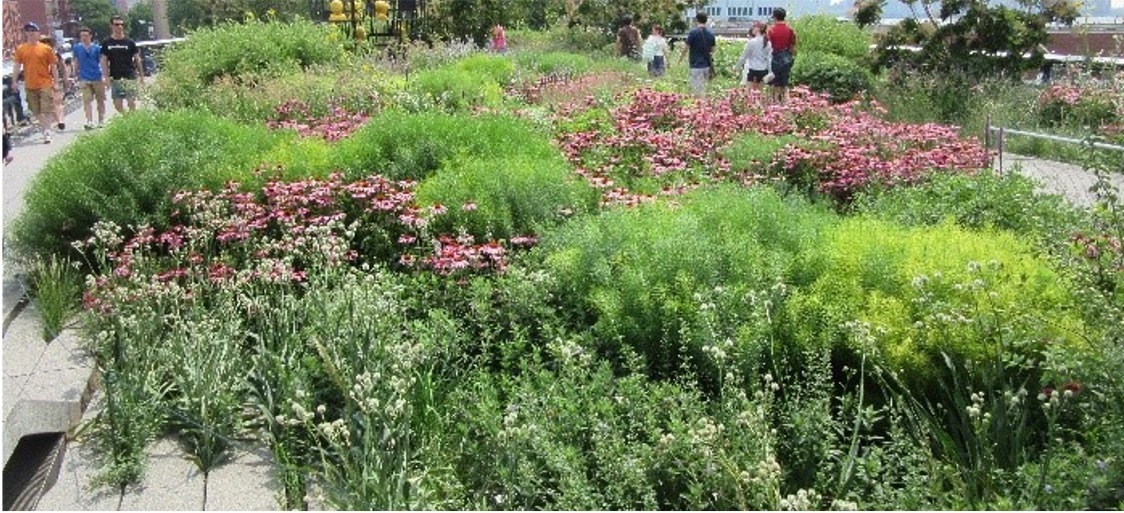
Plant in groups or drifts to make the flowers easily visible to pollinators. Many pollinators, especially bees, gather nectar and pollen from one species at a time. As they fly over a landscape they look for masses of blossoms that they know will provide the nutrition they need.
If your property is very small, plan on planting a minimum of three of each species. Most properties have room for at least 5 or more. Plant close together – many species can be planted 10" to 12" apart.
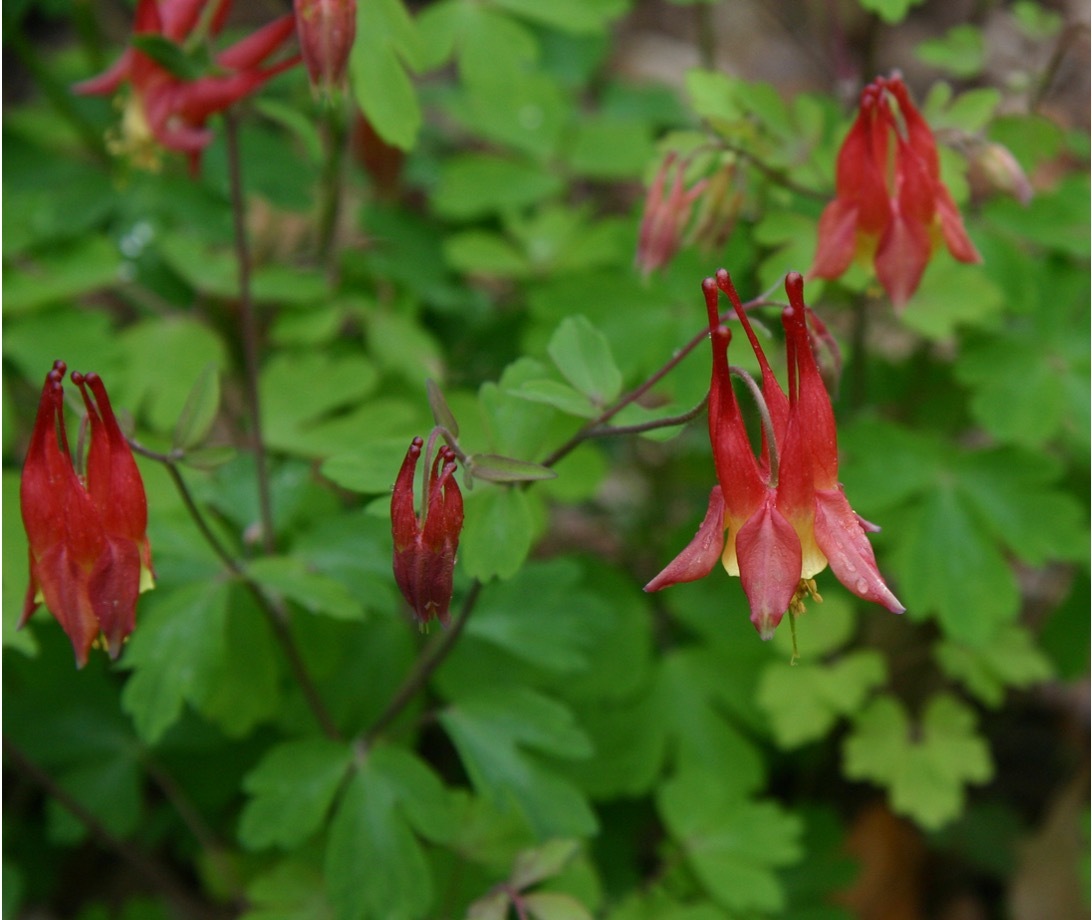
Insects often cannot feed on species of plants that are from other areas of the United States. The columbine that is native to Pennsylvania is Aquilegia canadensis, eastern red columbine.
The columbine duskywing is a skipper that is dependent on Aquilegia canadensis for its larval (caterpillar) host. Without Aquilegia canadensis it cannot survive.
Also note that this duskywing is imperiled in Pennsylvania. By planting our native columbine you can help this skipper survive here in PA.
The ruby-throated hummingbird has also co-evolved with eastern red columbine and depends on it as a nectar source.
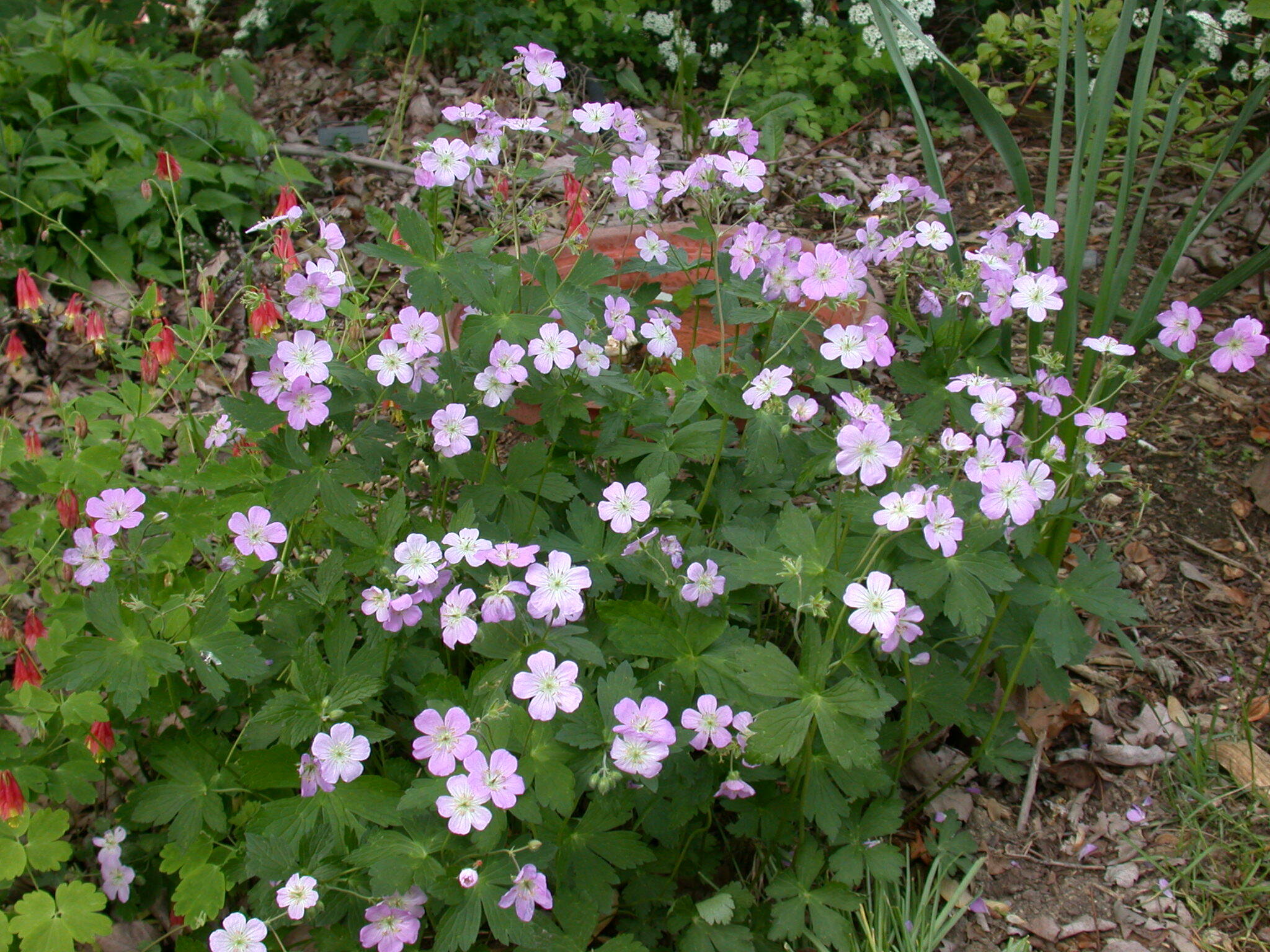
Purchasing the right geranium can be a challenge, but you will do fine if you purchase your geraniums using only the Latin name Geranium maculatum.
There are dozens of geraniums or cranesbills available at garden centers. Many are derived from plants from Europe and Asia. Others are cultivars or hybrids created to have showier blooms. Many of these have splashy names, but their bloom time may be out of sync with our pollinators. Some may have had the nectar and pollen bred out them.
Only Geranium maculatum will be useful as a host plant for leafmining moth (Parectopa geraniella) and the white-marked tussock moth (Orgyia leucostigma).
This is a complicated question. It depends on how the cultivar is derived. Some plants with cultivar names are natural selections of plants found in the natural environment. Others are actually hybrids between plants from different continents. A good example is Agastache 'Golden Jubilee', which is derived from an Asian Agastache. In our pollinator trials it performed very poorly.
Others are man-made cultivars, created to appeal to our desire for bigger, showier blossoms. To achieve this, sometimes nectar and pollen is sacrificed.
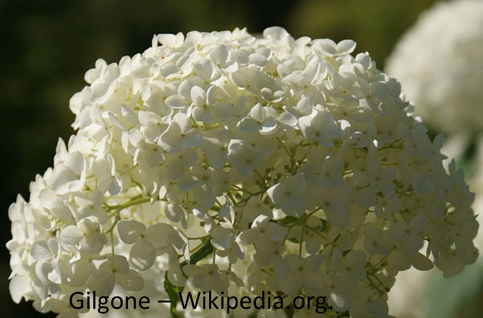
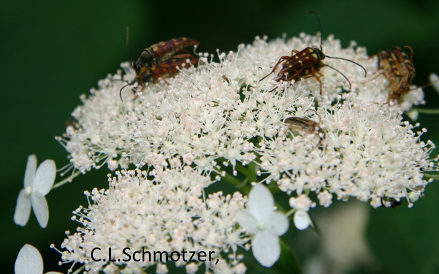
Hydrangea arborescens, smooth hydrangea, is a good example. The straight (native) species has many small nectar and pollen-rich blooms, and just a few large, sterile flowers with no pollen or nectar, around the edges to attract pollinators.
The horticultural industry has created a cultivar from Hydrangea arborescens called Hydrangea 'Annabelle'. 'Annabelle' has almost all large, sterile flowers. While the large flowers may appeal to us, they have no value for pollinators.
A good place to see if your cultivar has value to pollinators is the Mt. Cuba Center website. Their research team evaluates native plants and related cultivars for horticultural and ecological value, highlighting the ecosystem services native plants provide.
The Pennsylvania Native Plant Society website offers a list of nurseries that handle native plants. Most will offer a good selection.
There are several mail order sites that work with east coast native plant nurseries to offer retail sales. Izel Native Plants consolidates the inventories of wholesale-only growers and retail nurseries into a practical mail-order solution. The Pollen Nation offers landscape plant plugs (small, but deep rooted plants that will reach mature size in a year). New nurseries and mail order options are showing up each year.
NOTE: For the best results and the most value to pollinators, purchase plants as local to your location as possible.
Be careful what you buy! Many inexpensive wildflower mixes contain mostly non-native annuals such as bachelor buttons, blue flax, Siberian wallflower, and a few perennials. Some of these plants can actually be invasive, and many are not particularly helpful to pollinators.
While these mixes provide quick color, they slowly die out after a couple of years and the time and expense that you put into creating your meadow is lost. Read the package carefully to see what plants are actually in it. Make sure you choose a seed mix of perennials native to the Mid-Atlantic that match your site conditions.
The Xerces Society partners with the native seed industry to produce wildflower seed mixes.
You can check the Lady Bird Johnson Wildflower Center website to see if plants in the mix are native to Pennsylvania.
Creating a long-lasting meadow takes time and planning. The Lady Bird Johnson Wildflower Center website also offers excellent instruction
Live Green Howard, a project of Howard County Government in Maryland has a lovely website with links to templates for small and large gardens for various site conditions.